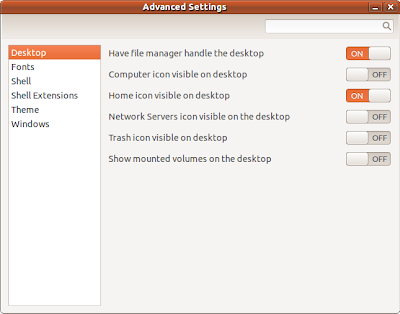For temporarily disabling, touchscreen will be enabled after re-login, first we should identify touchscreen id. For this run following command in terminal:
xinput --list
It will show like this:
Virtual core pointer id=2 [master pointer (3)]
⎜ ↳ Virtual core XTEST pointer id=4 [slave pointer (2)]
⎜ ↳ SYN1B7F:00 06CB:7DA2 Touchpad id=17 [slave pointer (2)]
⎣ ↳ Xyz Touchscreen id=9 [slave pointer (2)]
Virtual core keyboard id=3 [master keyboard (2)]
↳ Virtual core XTEST keyboard id=5 [slave keyboard (3)]
↳ Video Bus id=6 [slave keyboard (3)]
↳ Power Button id=7 [slave keyboard (3)]
↳ Lid Switch id=8 [slave keyboard (3)]
↳ HDA Intel PCH Front Headphone id=10 [slave keyboard (3)]
↳ HDA Intel PCH HDMI/DP,pcm=3 id=11 [slave keyboard (3)]
↳ HDA Intel PCH HDMI/DP,pcm=7 id=12 [slave keyboard (3)]
↳ HDA Intel PCH HDMI/DP,pcm=8 id=13 [slave keyboard (3)]
↳ HDA Intel PCH HDMI/DP,pcm=9 id=14 [slave keyboard (3)]
↳ HDA Intel PCH HDMI/DP,pcm=10 id=15 [slave keyboard (3)]
↳ HD WebCam: HD WebCam id=16 [slave keyboard (3)]
↳ Intel Virtual Button driver id=18 [slave keyboard (3)]
↳ AT Translated Set 2 keyboard id=19 [slave keyboard (3)]
↳ Acer WMI hotkeys id=20 [slave keyboard (3)]
In the above procedure re-login will enable touchscreen. For permanent disabling, we have to edit the file /usr/share/X11/xorg.conf.d/40-libinput.conf. for this run command
sudo gedit /usr/share/X11/xorg.conf.d/40-libinput.conf
or for xubuntu
sudo nano /usr/share/X11/xorg.conf.d/40-libinput.conf
This file will have entry like
Section "InputClass"
Identifier "libinput touchscreen catchall"
MatchIsTouchscreen "on"
MatchDevicePath "/dev/input/event*"
Driver "libinput"
EndSection
Change MatchIsTouchscreen "on" to MatchIsTouchscreen "off" like this
Section "InputClass"
Identifier "libinput touchscreen catchall"
MatchIsTouchscreen "off"
MatchDevicePath "/dev/input/event*"
Driver "libinput"
EndSection
Save the file. Now touch screen is permanetly disabled
xinput --list
It will show like this:
Virtual core pointer id=2 [master pointer (3)]
⎜ ↳ Virtual core XTEST pointer id=4 [slave pointer (2)]
⎜ ↳ SYN1B7F:00 06CB:7DA2 Touchpad id=17 [slave pointer (2)]
⎣ ↳ Xyz Touchscreen id=9 [slave pointer (2)]
Virtual core keyboard id=3 [master keyboard (2)]
↳ Virtual core XTEST keyboard id=5 [slave keyboard (3)]
↳ Video Bus id=6 [slave keyboard (3)]
↳ Power Button id=7 [slave keyboard (3)]
↳ Lid Switch id=8 [slave keyboard (3)]
↳ HDA Intel PCH Front Headphone id=10 [slave keyboard (3)]
↳ HDA Intel PCH HDMI/DP,pcm=3 id=11 [slave keyboard (3)]
↳ HDA Intel PCH HDMI/DP,pcm=7 id=12 [slave keyboard (3)]
↳ HDA Intel PCH HDMI/DP,pcm=8 id=13 [slave keyboard (3)]
↳ HDA Intel PCH HDMI/DP,pcm=9 id=14 [slave keyboard (3)]
↳ HDA Intel PCH HDMI/DP,pcm=10 id=15 [slave keyboard (3)]
↳ HD WebCam: HD WebCam id=16 [slave keyboard (3)]
↳ Intel Virtual Button driver id=18 [slave keyboard (3)]
↳ AT Translated Set 2 keyboard id=19 [slave keyboard (3)]
↳ Acer WMI hotkeys id=20 [slave keyboard (3)]
From above it is clear that touchscreen id is 9
For disabling touchscreen, use command:
xinput disable 9
For enabling touchscreen, use command:
xinput enable 9
In the above procedure re-login will enable touchscreen. For permanent disabling, we have to edit the file /usr/share/X11/xorg.conf.d/40-libinput.conf. for this run command
sudo gedit /usr/share/X11/xorg.conf.d/40-libinput.conf
or for xubuntu
sudo nano /usr/share/X11/xorg.conf.d/40-libinput.conf
This file will have entry like
Section "InputClass"
Identifier "libinput touchscreen catchall"
MatchIsTouchscreen "on"
MatchDevicePath "/dev/input/event*"
Driver "libinput"
EndSection
Change MatchIsTouchscreen "on" to MatchIsTouchscreen "off" like this
Section "InputClass"
Identifier "libinput touchscreen catchall"
MatchIsTouchscreen "off"
MatchDevicePath "/dev/input/event*"
Driver "libinput"
EndSection
Save the file. Now touch screen is permanetly disabled


